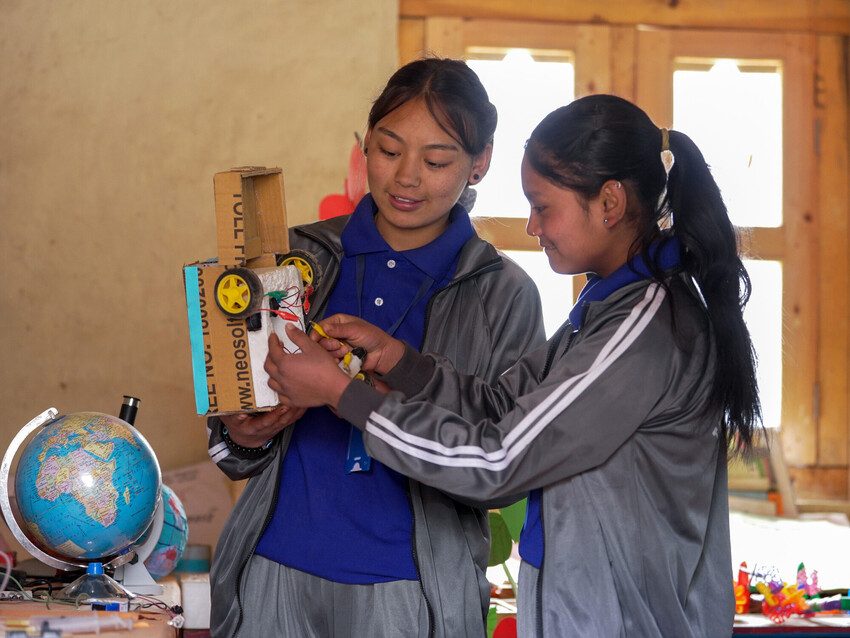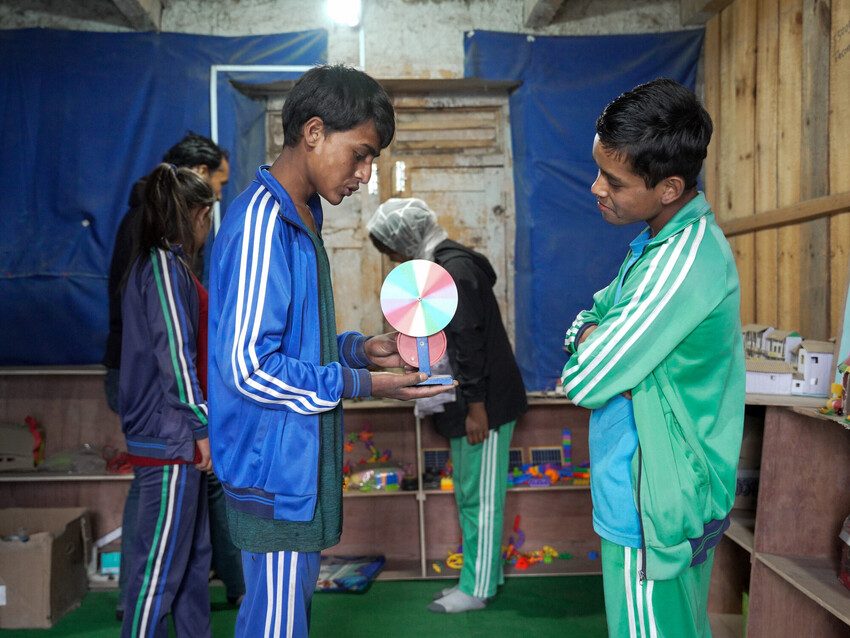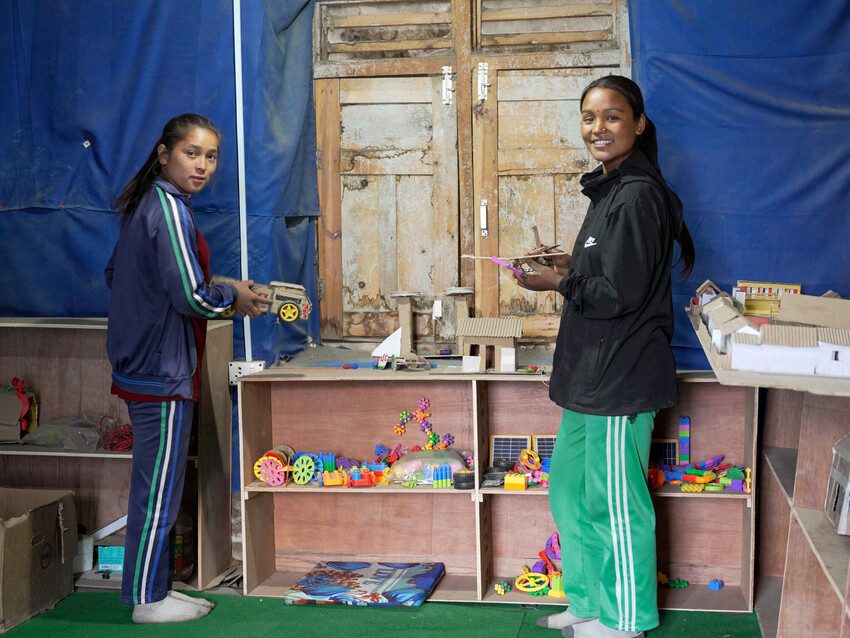Deepa puts science theory into practice
Keen to learn more about science and technology, 16-year-old Deepa has taken a hands-on approach, using her school's makerspace (a space for students to design, experiment and invent) to put theory into practice.

Meet 16-year-old Deepa, a ninth-grade student from Dolpa, a remote mountainous district in Nepal’s Karnali province. Passionate about learning, Deepa attends school regularly and pays close attention to her teachers. “My inspiration for life comes from seeing how education can change everything,” she says.
But one area where Deepa felt her knowledge was lacking was in science and technology, so when she heard that her school was opening a makerspace, she was keen to get involved. “Teachers do experiments there, like using a wheel to draw water, which makes it easier for students to understand the lessons.”
What is a makerspace?
Makerspaces are collaborative learning spaces that focus on STEAM (science, technology, engineering, arts and maths) subjects and encourage hands-on learning and creative problem solving. The learning spaces are designed to encourage students to work together to design, experiment, invent, craft and create.
“In the makerspace, we can come and create different things,” says student Rajesh. “By using electronic batteries, motors or collecting waste materials, we can build bulldozers, tractors and robots. This has been very useful for us in a practical way.”

Principal Ram Chandra Budhu says the school has been gradually involving students in the makerspace for the past 2 years, and it has made a big difference to students’ understanding of science and technology.
“Due to the geographical remoteness of Dolpa, where it is very difficult to provide all the education mentioned in the curriculum, the makerspaces are very useful for us,” says Principal Budhu. “Through these makerspaces, we can teach students practical knowledge in science, technology and communication, and connect them with things that are not normally available in Dolpa.”
STEAM education is often approached in schools by focusing on its separate disciplinary elements, particularly in relation to science, technology and maths. Makerspaces offer schools the opportunity to bring these subjects together and have a dedicated area where students can create, innovate and solve problems.

Deepa is now a regular visitor to her school’s makerspace, where she can work on projects and share ideas, equipment and knowledge with other students. “Science and maths have become much easier for me,” she explains. “It’s easier to understand concepts through hands-on learning than reading about concepts in books.”
Since the makerspace opened, the students’ exam results have improved. “Learning through the makerspace has shown me that with the right opportunities I can achieve anything,” says Deepa. “There is no confusion when physical objects are used to facilitate learning. I had no such experience before the makerspace opened.”
A natural athlete, Deepa hopes to pursue a career in sport one day: “I haven’t made any plans for the future yet, but I believe I can excel in sport if given the opportunity alongside my studies.”

About the project
The makerspace was set up at Deepa’s school as part of the STEAM Ahead project, funded by the European Union in partnership with Plan International. The project promotes the STEAM approach to education to develop creativity, imagination, innovation, scientific thinking and problem-solving skills across the disciplinary boundaries of subject teaching and learning in maths, science and the arts.
The three-year project (January 2021-June 2024) was implemented in 50 schools in the Dolpa district, covering 6 rural municipalities. The project aimed to contribute to inclusive and equitable quality education and lifelong learning opportunities in 2 ways: through systemic change in the way basic education is delivered, and by strengthening civil society’s capacity to shape the education system.
A key focus was on inclusive and gender transformative programming to strengthen local governance and the delivery of inclusive quality education in the aftermath of the COVID-19 pandemic.
Categories: Education


